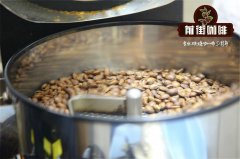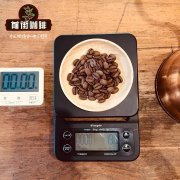The best coffee in Southeast Asia-Laos coffee beans _ how about Laos coffee _ how much is Laos coffee

Professional coffee knowledge exchange more coffee bean information please follow the coffee workshop (Wechat official account cafe_style)
You may not believe it, but Laos does produce the best coffee in the world. Compared with some other parts of Southeast Asia, Laos did not grow coffee for a long time, and it was not introduced by the French until the early 20th century. But the unique natural environment here makes Laos coffee beans vaguely reveal the king atmosphere of the best coffee in Southeast Asia.
As far as Asia is concerned, the best drip coffee is in Vietnam, while Laos has the best freshly ground coffee.
Laos coffee beans are famous for their delicate fragrance and rich taste, with citrus fruit and floral aromas and faintly chocolate sweetness in the aftertaste. Compared with the coffee with multiple flavors in Southeast Asia, the taste is fresher and milder and longer.
Laos coffee beans are grown in the plateau of Bolaven in the southern province of Bassai, and are basically distributed around Paksong, so Basong is also known as the coffee capital of Laos. The latitude is about 15 degrees, the altitude is more than 1300 meters, the climate is suitable, the rainfall is abundant, and the rich nutrition of volcanic ash geology creates unique conditions for local coffee.
In Laos, Arabica and Robusta coffee are grown. Originally all coffee grown in Laos was Arabica, and then because of the disease, about 80% of it was converted to Robusta, and now, like Vietnam, Arabica coffee is being replanted.
The production of coffee beans in Laos was originally small, and almost all of Arabica was sold to France, a relationship that has not changed since colonial times. Obviously, after the French left, the Laotians didn't know how to sell coffee. Robusta coffee is exported, sold to Thailand, went to Nestle, maybe this is why Thai Nestle coffee tastes so good. Basong does not have many large plantations, most small farmers produce, although there is the best coffee, but the tourism industry is still in its infancy, if you are a coffee enthusiast, you can also visit the local village. November to January is the harvest time for Arabica coffee, while February to March is Robsta's. If it's not that crazy, go to Vientiane or Luang Prabang cafes and carefully choose first-class local coffee. Remember to choose Arabica coffee varieties. Laotians also like to pour coffee into a glass mixed with condensed milk, and then have another cup of green tea.
Planting age and variety of coffee
Around 1920, French settlers began to grow coffee, mainly Arabica iron pickup and bourbon, on the Brawan plateau in southern Laos.
From 1940 to 1990, under the influence of external environment, such as war, agricultural disasters (mainly frost and leaf rust) and national policy, coffee varieties were gradually replaced by Robota species with stronger disease resistance and higher yield, and there were also a few Liberika species.
After 1990, the Arabica species began to receive renewed attention.
At present, the output of Robusta is still in the majority.
Coffee yield
Total output of coffee in Laos 2013-2016 (in bags, 60kg per bag)
Traditional coffee producing area: Brawan Plateau (Bolaven Plateau)
The Brawan Plateau (Bolaven Plateau), whose name comes from the "the Laven", the most populous ethnic group in the region, originally means "the home of the Lavan people". It is located between the Annan Mountains, the border between Laos and Vietnam to the east, and the Mekong River to the west at an altitude of about 1000 to 1350 meters (3300 to 4430 feet).
The Brawan Plateau has the longest history of coffee cultivation in Laos, and it is also the region with the widest planting area and the largest coffee production. Among them, the three areas covered by the plateau (that is, Basong in Basong province, Thateng in Sara Bay province and Laongam in Saigon province) account for 95 per cent of the total coffee production in Laos. The coffee planting area in the three areas is about 70000 hectares.
In addition to the three areas mentioned above, coffee is also produced in other areas of the Brawan Plateau.
In addition, coffee is also grown in the northern provinces on a smaller scale.
Coffee planting area of Laos provinces (2011-2012)
Coffee themed travel
The Brawan Plateau, famous for its pleasant climate, magnificent waterfalls and high-quality coffee, such as the Twin Falls (Tad Fang, also known as Dong Hua Sao) with the largest drop (120m) in Laos, is surrounded by mountains and primeval forests, the surrounding area is very cool all year round, the mountains run coffee plantations, and visitors can enjoy coffee on hundreds of Michael's cable cars.
There is also the small town of Paksong, known as the "coffee market".
The coffee and beauty of the Brawan Plateau have been listed in National Geographic magazine and recommended in Lonely Planet.
Most of the coffee farms here, like their American counterparts, operate coffee farms as well as coffee trips.
Qianjie coffee: Guangzhou bakery, the store is small but a variety of beans, you can find a variety of unknown beans, but also provide online store services. Https://shop104210103.taobao.com
Important Notice :
前街咖啡 FrontStreet Coffee has moved to new addredd:
FrontStreet Coffee Address: 315,Donghua East Road,GuangZhou
Tel:020 38364473
- Prev

The riddle of "Laos Coffee ranking in the World" _ Laos Coffee Arabica Coffee beans how much is one
Professional coffee knowledge exchange more coffee bean information please follow the coffee workshop (Wechat official account cafe_style) Laos coffee beans are completely 100% Arabica beans, the higher the content of this coffee beans, the better the taste rumors: Laos coffee beans are the world's third largest coffee beans, mainly exported to France! Coffee is Laos's fifth largest export. Poirot in the south
- Next

How does Laos import coffee? is Laos most famous for coffee? the latest price list of Laos coffee beans
Professional coffee knowledge exchange more coffee bean information please follow the coffee workshop (Wechat official account cafe_style) want to import Laos coffee beans, suggest to Mohan port there, I saw there are selling bags of finished Laos coffee beans, but coffee powder and coffee beans in bulk did not notice whether to sell, it is recommended to find out, there are also specialized import and export companies, there should be done
Related
- What documents do you need to go through to open a coffee shop? coffee shop coffee shop certificate processing process
- How to purchase Coffee beans in small Cafe how to choose a suitable supplier for domestic Coffee supply Company
- How to drink Starbucks Fragrance White Coffee? how to make Australian White Coffee? what Italian coffee beans are recommended?
- The Story of Flora Coffee: the name of Flora Coffee Bean and the implication of the Flowers on Florna Coffee
- How much does a cup of coffee cost? How much is the profit of a cup of coffee? What is the profit of the coffee shop in a year?
- Yunnan small Coffee, known as "fragrant Coffee", introduces the characteristics of Alpine Arabica Coffee producing areas in Yunnan, China
- 2023 latest Starbucks full menu price list how much is a cup of Starbucks coffee what is better to drink the most popular hot and cold drinks recommended
- Starbucks different kinds of Coffee Price list Starbucks menu 2023 Top Ten Best drinks in Starbucks
- Starbucks Spring praise Comprehensive matching Coffee Bean theme Story Packaging implication and taste description
- The cost of a cup of coffee latte American coffee cost price and selling price

